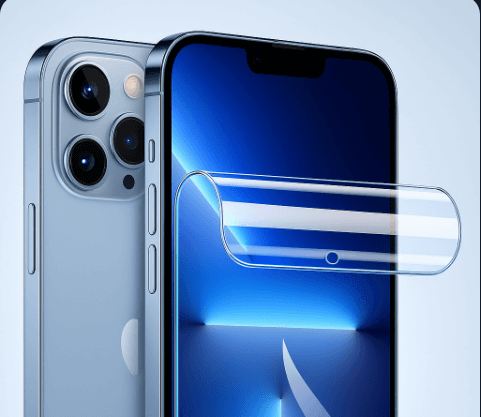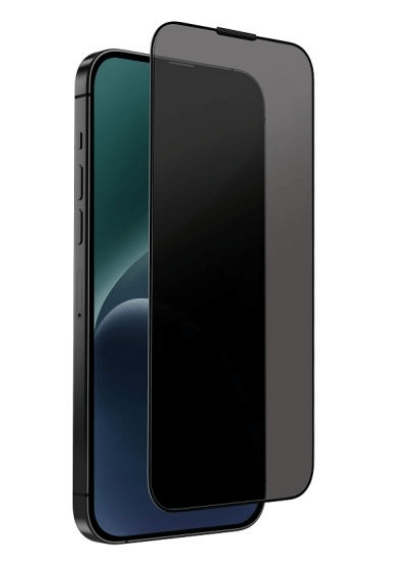Wondering how to choose a phone screen protector that actually works? This guide breaks down the types, features, and top picks. We will help you find the right shield for your phone’s screen, ensuring it stays safe from scratches and cracks without confusion.
Do I Really Need a Screen Protector?
First, let’s address a common question. Yes, you probably need a screen protector. A phone’s screen is its most vulnerable part. While a protector’s primary job is to defend against scratches from keys, coins, and daily grit (scratch resistance), a quality tempered glass protector also absorbs shock from drops (impact resistance).
Ultimately, replacing a cracked screen can cost hundreds of dollars. In contrast, a screen protector costs very little, providing excellent insurance against everyday hazards.
Understanding the Types of Screen Protectors
You will find several types of screen protectors on the market. Each offers different benefits.
The Gold Standard: Tempered Glass
Tempered glass protectors are the most popular choice for good reason. They offer superior scratch protection and feel just like your phone’s original screen, providing excellent clarity and durability.
The Flexible Option: TPU & Hydrogel
Thermoplastic Polyurethane (TPU) or Hydrogel protectors are flexible films. They are a great choice for phones with curved screens where glass might not fit perfectly.

In addition, these protectors often have “self-healing” properties, which means minor scratches can disappear over time.
The Budget Pick: PET
Polyethylene Terephthalate (PET) protectors are a basic and affordable option. They are thin plastic films that offer decent scratch protection. However, they provide minimal impact protection compared to glass or TPU.

The Invisible Shield: Nano Liquid Screen Protectors
A liquid screen protector is a solution that you wipe onto your phone’s screen. It bonds with the glass to create a stronger, more scratch-resistant surface. While it offers good scratch prevention, its impact protection is debated.
Exploring Specialty Screen Protectors
Beyond the basics, some protectors offer unique features for specific needs.
Privacy Screen Protectors
This protector uses a special filter that limits the viewing angle. As a result, people next to you cannot see your screen.

It is perfect for anyone who frequently uses their phone on public transport or in crowded areas.
Matte & Anti-Glare Protectors
This type features a frosted surface that diffuses harsh light, reducing reflections and fingerprints. This makes it a favorite among mobile gamers and anyone who uses their phone outdoors.
Blue Light Filtering Protectors
Many of us spend hours looking at our screens, which emit blue light that can strain eyes and disrupt sleep. Blue light filtering protectors have a special coating designed to reduce these emissions without significantly altering the screen’s color, adding a layer of comfort for heavy users.
Ceramic Protectors
A newer option on the market, ceramic protectors are a flexible, film-based material infused with ceramic nanoparticles. They blend the high clarity and scratch resistance of glass with the flexibility and impact absorption of TPU film.
What to Look For: Key Factors in Your Decision
Next, consider these important features to make the best choice.
The Truth About the 9H Hardness Rating
You will see “9H Hardness” advertised everywhere. It is important to know this refers to the pencil hardness test, where a 9H pencil (the hardest type) cannot scratch the surface. It does not refer to the Mohs scale of mineral hardness, where a diamond is a 10.
While 9H indicates excellent scratch resistance against metals like keys and coins, it is not invincible against harder materials like sand (which contains quartz, a 7 on the Mohs scale).
- Fit and Coverage: Decide between “edge-to-edge” protectors or “case-friendly” ones that leave a small gap for a phone case.
- Clarity and Touch Sensitivity: A good protector should be almost invisible and should not interfere with your touchscreen’s responsiveness.
- Fingerprint Sensor Compatibility: If your phone has an in-screen fingerprint sensor, check that the protector is compatible.
- Surface Coating: An oleophobic coating is essential. This coating repels oils from your fingers, reducing fingerprints and smudges.
- Warranty and Customer Service: Reputable brands often offer a lifetime warranty. If the protector cracks while saving your screen, they will send you a replacement.
- Customer Reviews: Always check reviews to see how a protector performs in real-world use.
Best Screen Protectors for Popular Phones in 2025
While your choice depends on the factors above, some brands are consistently recommended for specific devices.
- For the iPhone Series (15, 14, etc.): Brands like Spigen and amFilm are famous for their easy-installation alignment frames. For maximum durability, many users trust ZAGG and its InvisibleShield line. Look for bundles from brands like amFilm that also include camera lens protectors to shield your phone’s entire glass system.
- For Samsung Galaxy Series (S23/S24 Ultra, etc.): Curved screens require a special fit. Whitestone Dome Glass is the top choice here, as it uses a unique liquid adhesive and UV curing light for a perfect bond. For a film option that works well with fingerprint sensors, consider Spigen’s NeoFlex.
- For Google Pixel and Other Androids: Spigen and Supershieldz are excellent, affordable choices for flat-screen Pixel models. For curved Pixel screens, Whitestone Dome is again a leading recommendation.
Pro Tips for a Flawless Installation
Installing a screen protector can be tricky, but modern kits make it much easier.
First, always use the included cleaning wipes to remove all dust and oil from your screen.
Next, use an alignment tray or frame if one is provided. This tool ensures the protector goes on perfectly straight.
Finally, work slowly to press the protector onto the screen, pushing any air bubbles out toward the edges.
After installation, remember to re-register your fingerprints in your phone’s settings to ensure the sensor works perfectly.
Final Note:How To Choose a Phone screen Protector and Cases Work Together
Remember that a screen protector is primarily for scratch protection. While it can absorb some shock, the best defense against serious drops and impacts is a good phone case.
A case with a raised lip around the screen provides crucial impact absorption that a protector alone cannot. For total defense, use both a quality screen protector and a protective case.
Conclusion
Choosing the right screen protector is a simple way to protect your valuable phone. By understanding the different types, knowing the truth behind features like 9H hardness, and selecting a brand known for quality, you can make an informed decision. A small investment today can save you from a large repair bill tomorrow.
Now that you know how to choose a phone screen protector, which one will you get? Share your choice in the comments below!
Frequently Asked Questions (FAQs)
Q: Is a 9H hardness rating really important for a screen protector?
A: Yes, it indicates excellent resistance to scratches from everyday objects like keys and coins. However, remember it is not scratch-proof against harder materials like sand.
Q: Can a screen protector affect my phone’s fingerprint scanner?
A: It can. Thicker glass protectors sometimes interfere with in-screen fingerprint scanners. Always look for protectors specifically advertised as “fingerprint compatible,” especially for Samsung phones.
Q: What is the best screen protector for a curved screen?
A: For curved screens, like those on Samsung Galaxy Ultra models, a liquid-dispersal tempered glass protector like Whitestone Dome Glass or a flexible TPU film are the best options for a perfect fit.
Q: Do I need a camera lens protector too?
A: It is a very good idea. Modern camera systems are large and expensive to repair. Many protector brands now include camera lens protectors in their kits for complete protection.
IT Security / Cyber Security Experts.
Technology Enthusiasm.
Love to read, test and write about IT, Cyber Security and Technology.
The Geek coming from the things I love and how I look.

